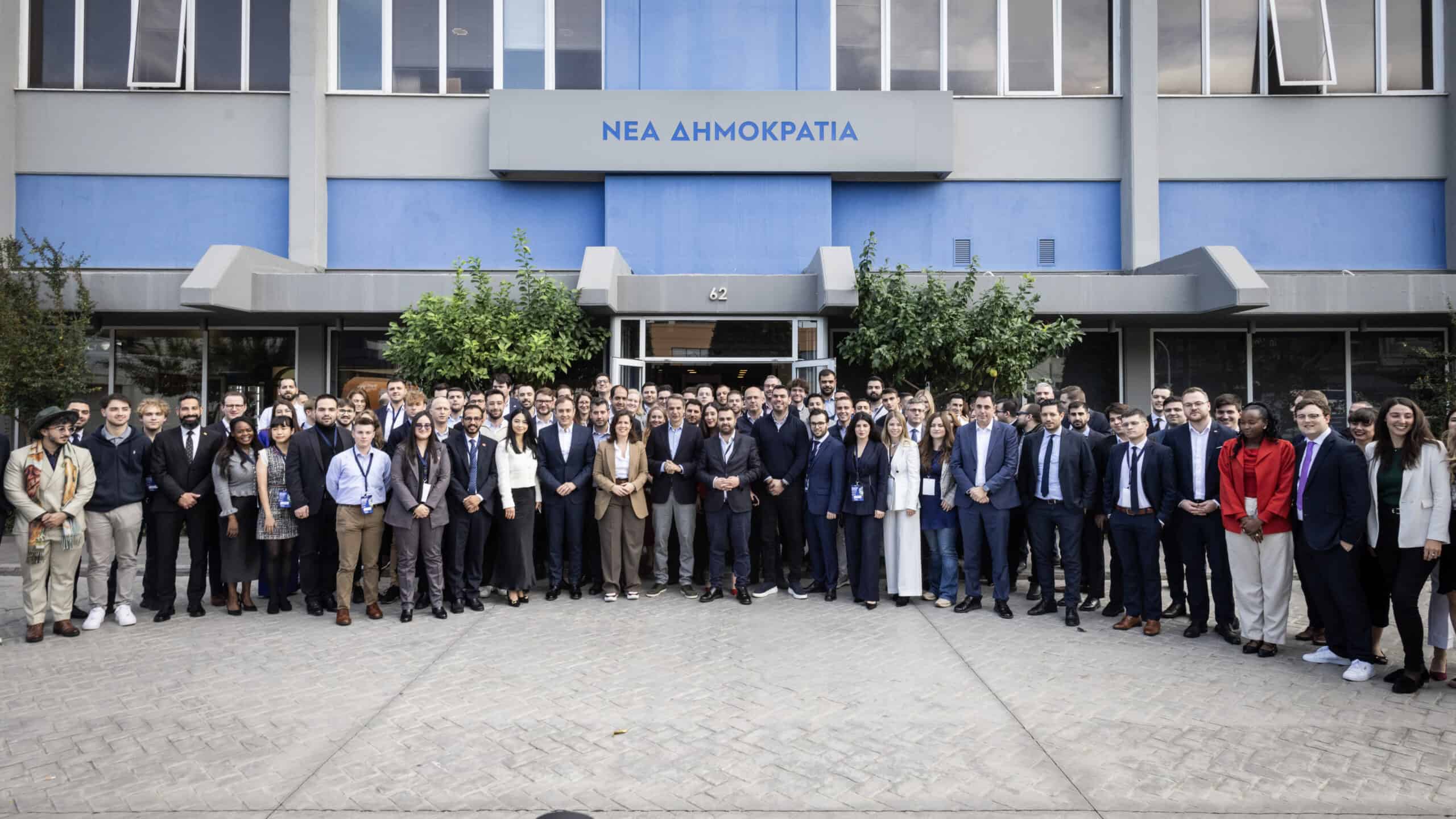Ever since the migration crisis of 2015, there has been talk of a West-East split in the European Union. In the eyes of the West, the Visegrad Group (V4), whose representatives essentially see themselves as Central Europeans, represents “troublemakers” and “blockers” and is perceived as lacking in showing solidarity. In contrast, the narratives of being “second-class member states” or “accepted guests” but by no means equal partners, have been rising in the respective countries. Where do these mutual negative attributions come from? What does it have to do with the history of the V4 and what does it mean for the EU’s (in)ability to operate in the future?
The Visegrád Castle is an appealing site, sitting enthroned above the Danube Bend in Hungary, about 40 kilometers north of Budapest. In the Middle Ages it was the capital of the Hungarian Kingdom. Back in 1335, the first meeting of the Central European decision makers occurred in this historic place. The three kings Casimir III. the Great of Poland, Charles I. Anjou of Hungary und John of Bohemia agreed on closer trade relations and wanted to push back the burgeoning power of the Habsburgs in the region. In retrospect, one can say that the first project was successful, the second not so much, since most of their territories (especially from the last two) fell under Habsburg rule and remained there for centuries, until 1918. Referring to this historic meeting a good 700 years ago, after the fall of communism in the 1990s the three incumbent presidents of Poland, Hungary and Czechoslovakia met again and pledged to join the political and economic system of (Western) Europe. Eventually, Slovakia broke away as a separate state and when all four joined the EU in 2004, the current known V4 was born. Interesting to note – the prime ministers or governing parties of the four countries never represented the same European party families at the same time. Nevertheless, cooperation and consultation before summits was always strong. This also shows the close political and cultural ties of these countries.
A fundamentally different perception of the Union
From then on, it was considered a kind of Central Eastern European counterpart to the Benelux group. There is a fundamental difference between of the founding states Germany, France and the Benelux and the V4 when it comes to the perception of the EU and their own role in it. Acknowledging this is crucial to understanding the defined ongoing conflict. Whereas the initiators launched the European integration to ultimately mitigate national sovereignty and share it under a common high authority, the V4 joined the EU in a phase in their history where they were keen to retain their newly acquired sovereignty and freedom, and the EU was there to do support this approach. This is the exact opposite view and goal of the founding states. Even more, the founding states see themselves as drivers and main actors of the European idea, while the V4 see themselves as outsiders. To make it even more complicated, all European key policy decisions are made in Western capitals, the “new” member states just adopt them – so their perception. The V4 and others are therefore rather skeptical about further integration steps. This perception and ongoing skepticism is particularly visible when it comes to a stronger Commission, migration policy and the rule of law.
Up to now, a stronger Commission and more competence is always seen as a threat to sovereignty.
In asylum and migration policy, to put it simply, there are three camps with different interests among the member states: the “Mediterraneans”, “Humanitarians” and “Eastern Europeans”. The Eastern European member states, led by the V4, are struggling with occasionally massive emigration[i], therefore the migration issue is also seen as an identity issue. The conflicts about the EU migration policy itself are not only about the hotly debated distribution key for asylum seekers, where the V4 and others opposed. At the fault lines it is a question of national vs. EU competences[ii], the framework of the EU treaties vs. secondary law and the fear of the loss of national identity vs. humanitarian obligations. So again we have the framing of national sovereignty and the narrative that others are telling them what to do. After seven years of unsuccessful negotiations, a Commission proposal that takes these sensitivities into account is finally on the table, as experts praised it as being “the fine art of pleasing no-one”.[iii]
When it comes to rule of law, the main reason for discrepancies and deficits can probably be partially explained by the fact that state affairs are not desired to be told by EU institutions. In addition, in almost all post-communist countries there is a huge lack of trust towards state institutions. While a compromise with Poland appears possible, relations and communication with Hungary are steadily deteriorating. In addition, these countries have a relatively young democratic tradition compared to the West.
It’s the history, stupid
A debate on EU politics with Hungarian political representatives very often starts with a remark about the “fateful Treaty of Trianon” (1920). We see, history still counts and has an impact. The narratives go much further back: “Throughout history we have always had to defend our nation and maintain our nationhood: first against the Ottomans, then against the Habsburgs, then against Soviet Russia and finally against Brussels.” The comparison is, of course, ridiculous. Not only is it historically incorrect, but also dangerous to compare the iron fist of a dictatorial system with a voluntary membership in a democratic EU. But what remains, is the feeling among parts of the population that it is somehow a continuity and that “everyone on the outside has to tell us how we should live”. Unfortunately, current leaders fuel this twisted narrative for their own popularity. The heating up of these feelings is misused for domestic political goals, especially in Hungary, but it also takes place elsewhere.
A historical fact is however, that the V4 are post-communist societies. The transformation process penetrates all areas and is not yet complete. It assuredly takes longer to digest 40 years of communism (and a century of violence and political turmoil). Even in Germany today – 30 years after reunification – people still talk about the so-called “new federal states”, a little bit oddly. As well, under the guise of state justice, terror was carried out on its own population during the communist period. That probably explains the lack of trust toward national and supranational institutions and the passive involvement in the EU. “Imagine growing up in the Eastern bloc thinking that your neighbor might be a CP snitch. The first reflex as a citizen of a new, capitalist and democratic state would be to build your own house, surrounded by a high fence. In such a social environment, where the own civil society has to be rebuilt first, many people are not yet ready to tinker with a common European one – with all the political consequences” – a Slovak colleague told me. So all in all, history matters and the political and societal processes here take three, four decades longer to happen then in the urban metropolises in the West and North of the continent. I sometimes think Western Europeans have too little sense of these needs.
V4 or V2+2?
So the question arises, what do the V4 want from the EU? They built an alliance against the distribution of asylum-seekers, against a stronger rule of law clause and against the “Spitzenkandidat”-principle during the 2019 elections, but on the other hand there is i.e. no common specific output from the Conference of the Future of the EU. Although they don’t like being told what to do by others, they haven’t managed to get their own ideas accepted by the majority. Therefore, they are often not considered as an alliance for something, but rather against something – hence the “blocker” attribution. Apart from the mostly good regional cooperation and the skepticism towards a more federalized EU, in my eyes there is no common vision. One can also speak gradually more of a 2+2, and a lot of observers currently do so: after the change of government in Slovakia in 2020/2021 and the Czech Republic in 2022, these states began looking more towards Berlin, Vienna and Brussels. They don’t identify with the conflicting rhetoric and the restructuring of state by their two Visegrad partners. Even more, in particular the Czech Republic, increasingly sees the V4 as a bloc that exclusively serves Hungarian interests and power games, and they no longer want to play along with that. Thus it can be said, that there is no coherent V4 bloc anymore.
On the Ukraine question, Czechia, Slovakia and also Poland take an entirely different position than Hungary and isolate the country. The support of and solidarity with Ukrainian refugees in this three countries is also huge, with Czechia housing the most per capita. However, when it comes to rule of law, Poland (under the current government) and Hungary will continue to support each other. It would be advisable for Western Europe to get involved with the new constructive forces in this region more.
Double Standards and lack of mutual understanding
In general, Central Eastern EU member states only see themselves as accepted guests inside the EU. Not only are they on the periphery, but they didn’t get any EU top jobs either[iv], and the region also got nothing in the wake of the relocation of two EU agencies resulting from Brexit. Some politicians, but also some media, see a double standard in judging political values on this matter. Hungary and Poland for example, have been criticized for not participating in the European Public Prosecutor’s Office (EPPO), which indirectly meant accusing them of a lack of willingness to cooperate in the fight against corruption. However, Sweden, which is also not participating, and Ireland and Denmark, which negotiated an opt-out clause, are not accused for this. When the Hungarian government proclaimed suspended the national emergency in the wake of the corona pandemic, media across the EU registered it as a dismantling of democracy. The same events in France were not criticized on that level. Of course, it is reasonable that one should rightly be more concerned about the democratic performance of some states than others. However, no democracy is perfect, and sometimes flaws of the usual suspects are judged worse. Unfortunately, for many citizens in Eastern Europe one thing sticks in their minds: no matter what we do, it’s not good enough for them.
Future conflicts, red lines and a dilemma
While the painful history and lack of thorough understanding of these countries explains some things, it should by no means be taken as a justification. Human dignity, liberal democracy and the rule of law are defined as core European values. The competence of the EU on the latter is supported by all member states. However, there are serious problems with Hungary, where the rule of law debate is deliberately mixed up with the other controversial issue – migration policy – and willingly perceived as political blackmailing. I consider it as very unlikely that the relationship between Hungary and the EU can be improved again. Still, the rule of law is the fundament, the ultimate red line and not negotiable. Especially when it comes to restructuring the state and undermining it, all instruments must be used to tackle this. One can only hope that the new rule of law mechanism works efficiently.
Future conflicts will also include to the way of dealing with external actors and their strategic influence. With China, economic ties are deepening. It is still open, whether some Central Eastern European countries will build the 5G infrastructure witch China’s know-how. Will this issue result in the next split of the EU – this time along different digital sovereignties? A battle between the political systems of democracy and autocracy is raging, not only in China, but especially in Russia at the moment. For Orban, it must also be clear: one cannot dance at two weddings at the same time.
Another potential area of conflict with some V4 and Eastern European countries is the debate about a deeper, federalized union and a “multi-speed Europe”. It might evoke the feeling of a lack of recognition during the difficult process of self-identification within the new Europe after 1989. Through mental mapping, the region is repeatedly ascribed different characteristics In my eyes, the Hungarian author Péter Esterházy summarized this psychological dilemma already in 2003 quite well: “I used to be an Eastern European, then I was promoted to the rank of Central European. Then I became a ‘New European’ and suddenly it was explained to me I am a ‘non-core European’, where I belong again in a periphery, somewhere out again.“
And that in turn leads to my own dilemma: I think, that many future political issues can be solved in a federalized EU. However, many countries in the East will then fall by the wayside. The battle between “Federalists” on one side and “Nationalists” on the other, to which the V4 mostly belong, will intensify. If a completely federal Europe forms, there will no longer be 27 member states and the historical and civil mission of uniting all the peoples of Europe under one roof will fail. If the nationalists win, the EU will be completely paralyzed, a loose association unable to solve the challenges of our time.
Conclusion
Two points are crucial for me in, to conclude.
Firstly, the Central and Eastern European member states are not new anymore and will act more self-confident. When people speak about the EU as a “European family”, the V4 and others who joined the EU in 2004, are no longer children but are grown up now. So far, the heads of the families (founding states) have set the tone, but now the Eastern countries have been part of the bloc for 18 years. They will no longer be told off by the elders. It can therefore be assumed that they will articulate their own ideas more intensively and make themselves heard. Hopefully, the East hits the right tone without pure blockades and calculated provocations. And hopefully the West listens and recognizes that there are rational and legitimate interventions from somewhere else as well.
Secondly, the pace of integration and the different positions of the “federalists” and “nationalists”: I’m afraid, the only way to keep Europe united is to take the infamous slow middle way. The European integration must continue to happen too quickly or too slowly and too much or too little for individual countries, interest groups and parties. And yes, it must be the case that everyone grumbles and everyone is equally dissatisfied, but on board.
Political solutions take time, but the EU is capable of learning. The financial crisis taught us to create a common banking supervision. We will also see a deal on the migration issue. The corona crisis taught us to coordinate our European health policy as well. The climate crisis (and committed young folks) made us forge the European Green Deal and support the particularly socially and economically affected regions with the Just Transition Fund. And one of the lessons we learned from the Russian invasion is that we should finally formulate a CFSP that lives up to its name.
While I am writing these concluding words, I am sitting in a typical Viennese Cafe. It is probably not so obvious for some people, but Vienna is located further east than Prague, Ljubljana and Zagreb, and closer to Bratislava and Budapest than to the Austrians’ favorite ski resorts. Historically closely connected, we assume more input to the EU from this capitals will come in the future. Speaking of history, I recently read the book “Better wordt hiet niet” by Dutch author Caroline de Gruyter, in which she draws parallels between the Habsburg Empire and the EU. Both very different entities had some unanticipated things in common: bringing numerous peoples and nations under one roof, balancing interests as a grand strategy, gaining time as a tactic, setting up courts to treat everyone equally, a bureaucracy to enforce the rules and it was always particularly difficult with the Hungarians.
Maybe it’s a little bit like the Habsburg Empire back then. You have to “muddle your way through” because a veto can come from any one at any time. Finely, balanced compromises that not everyone likes are forged, but everyone participates, and there is no division between East and West. After all, the feat of keeping a large number of peoples, nations and religions together peacefully succeeded for centuries.
[i] https://de.statista.com/statistik/daten/studie/164004/umfrage/prognostizierte-bevoelkerungsentwicklung-in-den-laendern-der-eu/
[ii] Incidentally, a Czech-born expert has analyzed why the EU Commission does not actually dictate this question at all and why there is the greatest possible consensus on this sensitive issue. See: NOVOTNY, VIT (2021): Brussels-Based Dictatorship or a Paradise of Subsidiarity? National Prerogatives and EU Migration Policy. In: Wilfried Martens Centre. Published on 8 September 2021. Online: https://www.martenscentre.eu/wp-content/uploads/2021/09/Martens-Centre-Future-of-Europe.pdf
[iii] BRADY, Hugo (2020): VDL’s migration plan – The fine art of pleasing no-one. In: International Centre for Migration Policy Development. Published on 24 September 2020. Online: https://www.icmpd.org/news/import-news-september/vdl-s-migration-plan-the-fine-art-of-pleasing-no-one
[iv] Except for a Council President and a Parliament President from Poland







